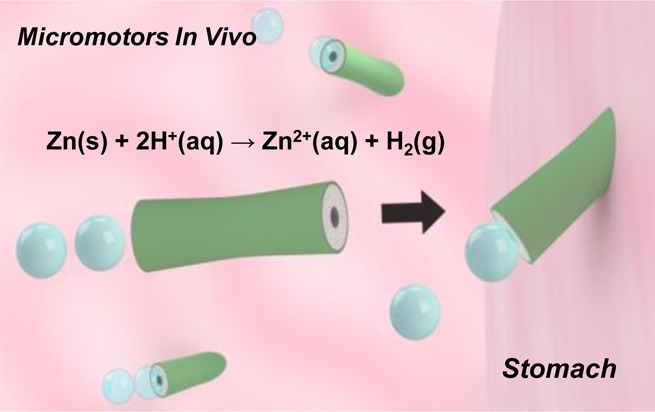- Record: found
- Abstract: found
- Article: not found
Artificial Micromotors in the Mouse’s Stomach: A Step toward in Vivo Use of Synthetic Motors

Read this article at
Abstract

Artificial micromotors, operating on locally supplied fuels and performing complex tasks, offer great potential for diverse biomedical applications, including autonomous delivery and release of therapeutic payloads and cell manipulation. Various types of synthetic motors, utilizing different propulsion mechanisms, have been fabricated to operate in biological matrices. However, the performance of these man-made motors has been tested exclusively under in vitro conditions (outside the body); their behavior and functionalities in an in vivo environment (inside the body) remain unknown. Herein, we report an in vivo study of artificial micromotors in a living organism using a mouse model. Such in vivo evaluation examines the distribution, retention, cargo delivery, and acute toxicity profile of synthetic motors in mouse stomach via oral administration. Using zinc-based micromotors as a model, we demonstrate that the acid-driven propulsion in the stomach effectively enhances the binding and retention of the motors as well as of cargo payloads on the stomach wall. The body of the motors gradually dissolves in the gastric acid, autonomously releasing their carried payloads, leaving nothing toxic behind. This work is anticipated to significantly advance the emerging field of nano/micromotors and to open the door to in vivo evaluation and clinical applications of these synthetic motors.
Related collections
Most cited references17
- Record: found
- Abstract: found
- Article: not found
Rolled-up nanotech on polymers: from basic perception to self-propelled catalytic microengines.
- Record: found
- Abstract: not found
- Article: not found
